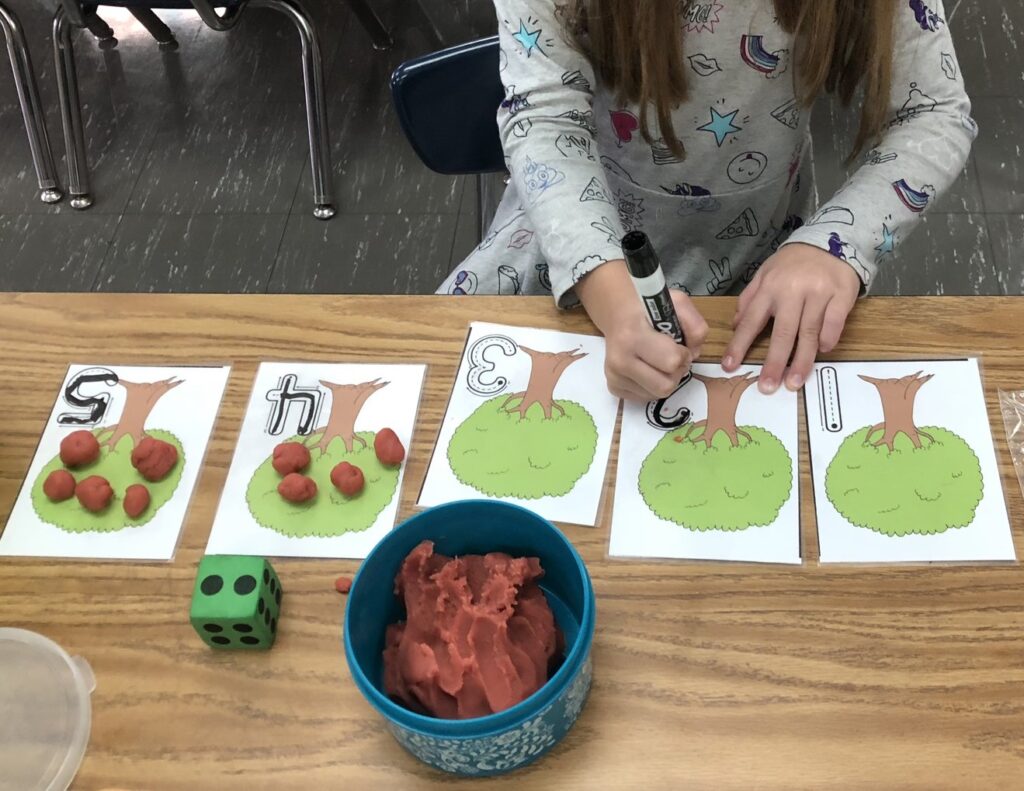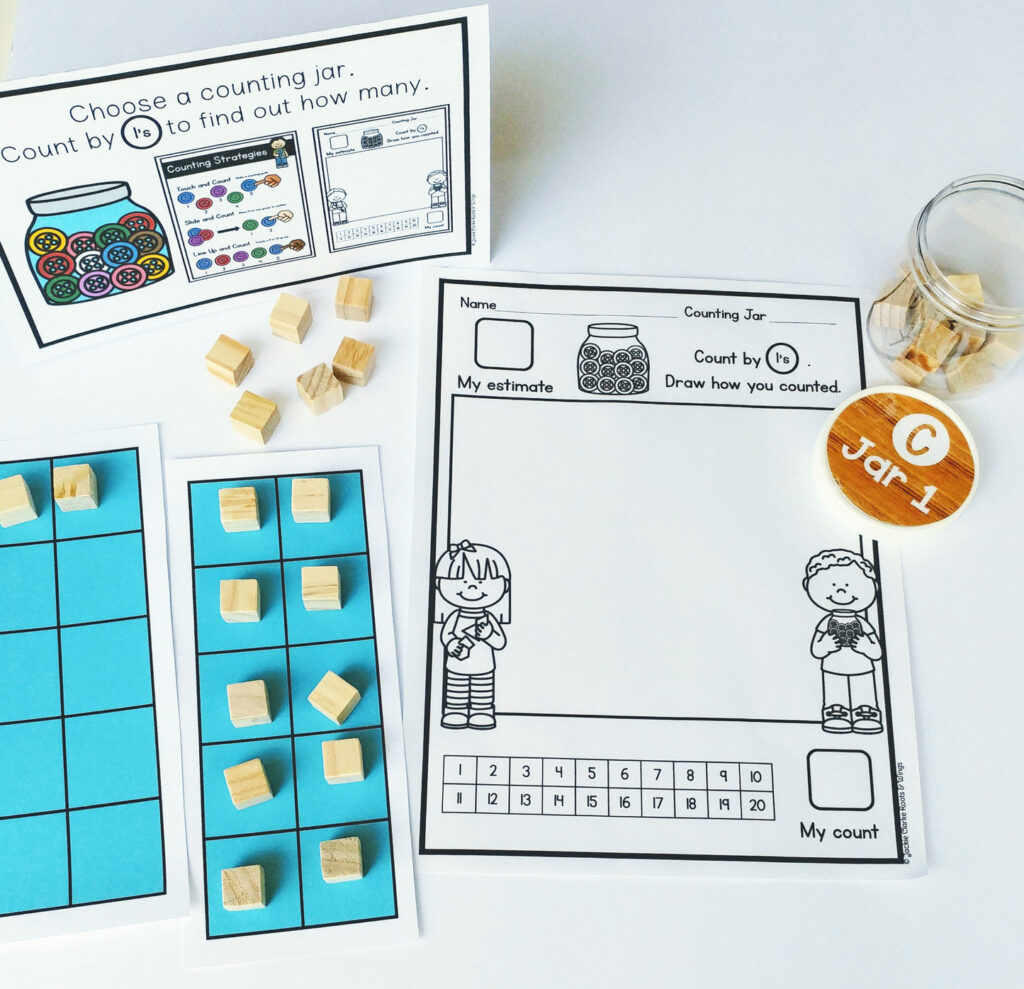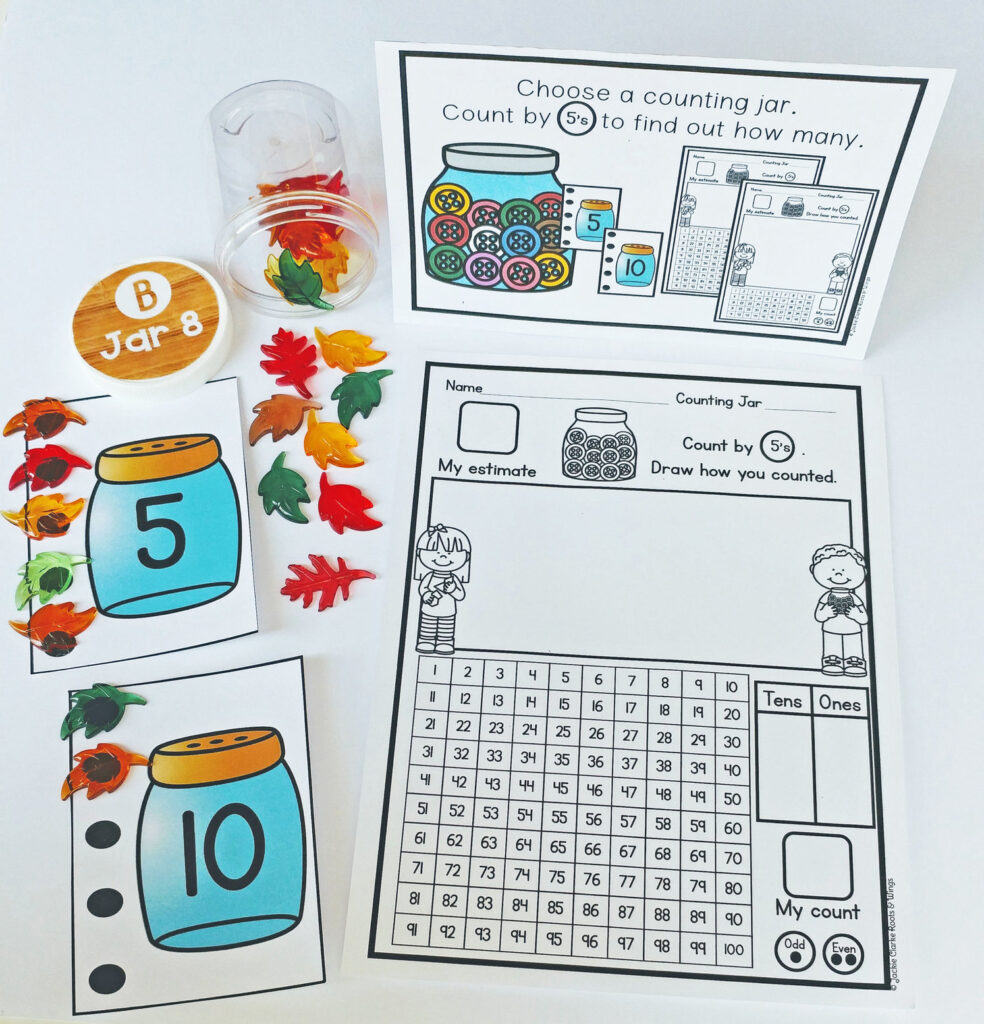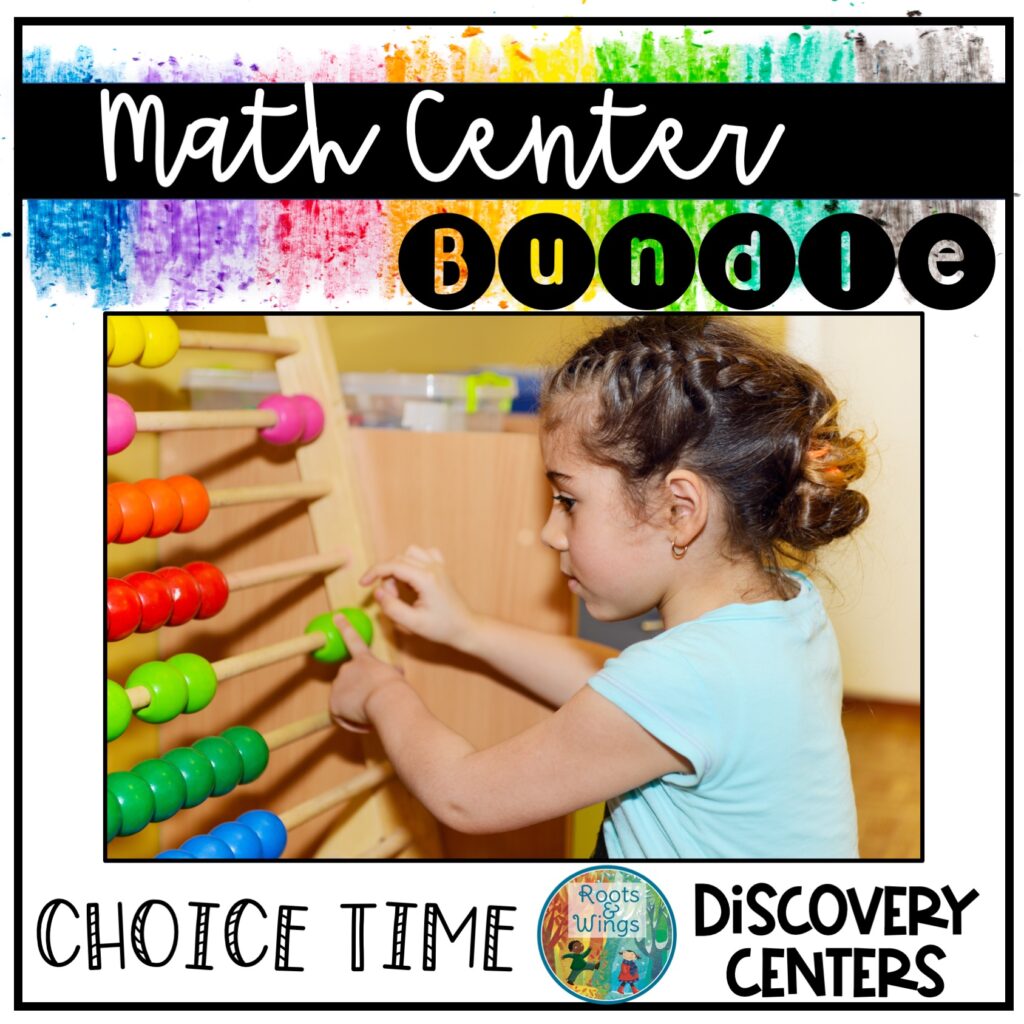Got Number Sense?
My primary focus in teaching math in kindergarten is to build strong number sense skills and I am always on the lookout for number sense activities that help me to do this well.
In this post, I’ll share my top 5 favorite number sense activities and a little about why I chose them.
But first…
What is Number Sense?
Number sense specifies a group of key math abilities and includes:
- counting and recognizing sets
- comparing numbers and quantities
- ordering numbers
- number recognition
- numeral writing
- composing and decomposing numbers
How many number sense skills do you see this child using in this picture?
What Makes a Good Number Sense Activity?
Here is what I look for when I’m selecting number sense activities for my kiddos:
- Wide-Reaching Benefits: There are tasks that work on one skill and those that work on many. Basically, I’m looking to get more bang for my buck! Activities that work on number recognition AND counting go a lot further than those that just work on one of those skills.
- Open-Ended: In general, I prefer tasks that are open-ended vs. dead-ended. Using open-ended tasks means that I never hear, “I’m done” or have a need for early finisher activities. Games are a good example, because they can be played over and over again and provide lots of practice. Offering choices is another way for children to repeat the same activity, but with a different set of materials.
- Hands-On: Worksheets might have their place, but they don’t build number sense in the same way that manipulatives do. If children are working with quantities, they need to touch them, move them, count them and rearrange them. Real stuff = real learning.
- Repetition: Number sense is not just something that is taught in unit 1 in kindergarten. It is the big idea for the entire school year. So I stock my math center with number sense activities that help children continue to practice and strengthen their skills all year long.
- Same but Different: I try to avoid “one and done” tasks and instead prefer number sense activities that can be introduced at the beginning of the year and then just tweaked a bit by adding a new mat or manipulatives. This “tweak” is usually enough to keep my kiddos engaged, but doesn’t require them to to learn a whole new set of directions.
My Favorite Number Sense Activities
Counting Jars
Counting collections of mini erasers, natural materials, or math manipulatives is a fun and playful way for children to practice 1:1 correspondence, oral counting, skip counting, place value, and numeral writing.
I begin by having children count by 1’s with quantities of less than 20. As children’s skills progress, I teach them how to organize their count into counting by 2’s, 5’s and 10’s and increase the quantities to 50 or less and then 100 or less. Counting Jars allow me to scaffold and differentiate practice because my kiddos are all at different places with their counting.
Number Staircases
Number staircases help children visualize the pattern of our number system and understand that each number has a value that is one more or one less than the numbers that come before and after. I’ve seen a lot of children struggle with this, and if not mastered, they have more difficulty with addition and subtraction.
I use 3 different kinds of Number Staircase Activities to support them in recognizing this pattern.
- Staircase Mats: Early in the year, children use a variety of materials to build staircases using the above template as a guide.
- Storybook Staircases: The next step, is to remove the template and let children use hands-on materials to build their own staircase on a work mat. To make it fun, I they place a favorite storybook characters at the bottom of the stairs and their destination at the top. (i.e. Little Red Hen/Mill)
- Staircase Games: These roll and color dice games, using one or two dice, challenge children to be the first to build a staircase.
Number Stories
Math number stories are a great hands-on way for children to grasp the concept of addition and subtraction while also building oral language and math vocabulary.
We progress through 3 different levels throughout the year.
- Level 1: The number sentence and theme are provided and children use both to tell a number story.
- Level 2: Only the theme is provided, as pictured above, and children choose their own number sentence and tell a number story.
- Level 3: Children choose the theme and number sentence and tell a number story.
By introducing Number Stories at the beginning of the year, children are much more prepared for our unit on addition and subtraction in the spring.
Number Building
Number building challenges children to use their visual spatial sense to construct numbers while providing number recognition and formation practice.
I use 2 types of invitations.
The first, building basics, dictates the type of building material children use such as popsicle sticks, pattern blocks, playdough, snap cubes, or Lego bricks.
The second, creative construction, lets children choose from a variety of loose parts to build their numbers.
Both, Number Building Activities, invite children to trace the number when they have finished building it.











 5 Steps to Teach Number Writing Using Formation Rhymes
5 Steps to Teach Number Writing Using Formation Rhymes 100 Chart Games & Activities for Beyond the 100th Day
100 Chart Games & Activities for Beyond the 100th Day Teaching One More and One Less with Number Staircases
Teaching One More and One Less with Number Staircases Introducing Number Bonds in 5 Easy Steps
Introducing Number Bonds in 5 Easy Steps